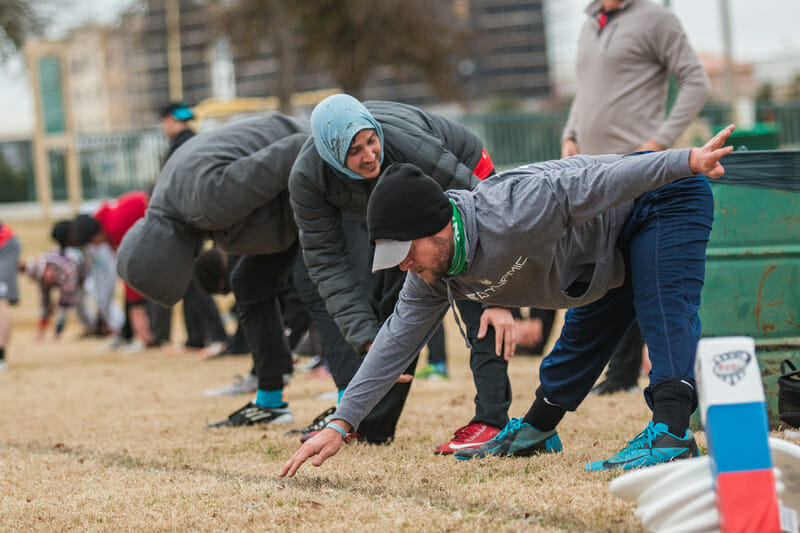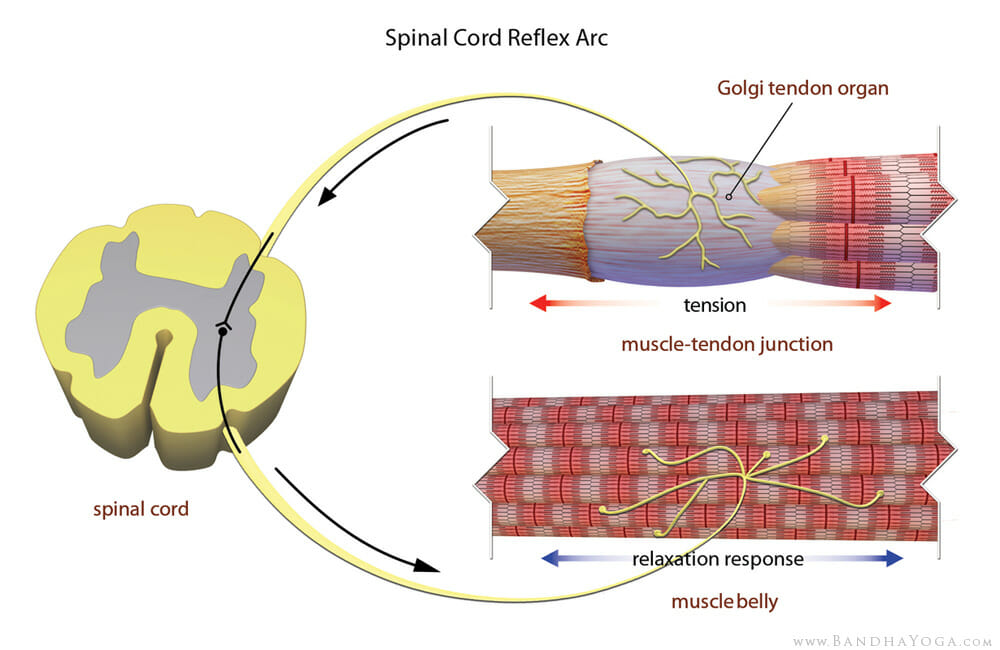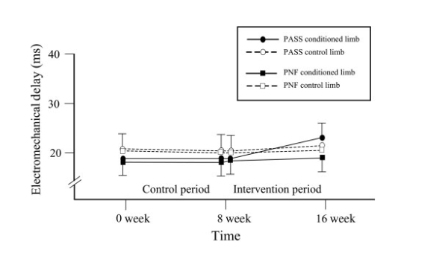Use contract-relax stretching to increase your flexibility.
March 12, 2017 by Patrick Kelsey in Opinion with 0 comments

Every team has one. The guy or girl who simply refuses to stretch. They ghost at the end of practice, shun the post-game pow-wow, and are definitely finishing their coffee during the oft-debated pregame stretch. Whether you know this person — or are this person — most of the athletic community seems to sympathize. Exercise science research has desperately attempted to produce a study that can tell us what we all want to hear: stretching stinks, skip it!
While research on the optimal implementation of static stretching is still evolving, the most relevant research on stretching is being done on athletes who want to prevent lower body muscle strains, especially in the hamstrings; the evidence from these studies shows greatly reduced injury prevention in this population (Rogan, 2012). Whether you’re incorporating static stretching into you pre-game warmup or executing it mid-week as part of your larger training protocol, there are strategies you can employ to get the most out of the stretch (and, yes, without immediately compromising your maximal explosive performance).
Proprioceptive neuromuscular facilitation (PNF) is a technique designed to elicit a distinct response from your central nervous system. It is a way to use your body’s natural muscular reflexes to inhibit muscle contraction, allowing for increased ability to lengthen tissue and gain range of motion in your stretch, ultimately reducing injury potential.
We’ll use the instructions for the supine hamstring stretch as an example.
- Lying on your back with your legs straight, loop a towel or strap over your heel and pull your foot up towards the ceiling with a slight bend in the knee. Take your stretch to end range of motion and hold for 30 seconds.
- Perform a static contraction of the hamstring for 5 seconds. Think about trying to lower your leg to the ground, but only use about 20% power to keep it static. You don’t want your muscle to actually shorten, so let your arms “win”.
- Relax the hamstring muscle for 10 seconds and pull your leg beyond the initial end of your range of motion. Deliberately relax the hamstring throughout the pull here, and look to go about 2-3% further than your first stretch.
- Repeat steps 2 and 3 between 2-4 times per leg. On your last repetition, flex the quadricep.
Here’s what’s going on in your central nervous system (CNS): Once your hammy is taken to its max stretch, your CNS reflexively prevents it from going any further. When we perform the contract-relax technique, we are using an opposing reflex known as autogenic inhibition to override this reflex. During the contraction, a sensory receptor called the golgi tendon organ senses the extra tension; these organs know that tendons are not designed to stretch, so they immediately cue the CNS to relax the muscle to accommodate the perceived overstretch. It is in this 10 second window that we pull back and find an extended range of motion.

In the last round of the flex/release pattern described above, when you flex your quad, you’re employing another reflex known as reciprocal inhibition. Your CNS knows that when a muscle on one side of a joint flexes, the muscle on the opposite side of that join should relax. Therefore, we get extra bang for our buck in this stretch by relaxing the hammy and flexing the quad simultaneously.
For the folks who are worried about loss of power due to stretching: the chart below (Minshell et.al.) shows that PNF stretching resulted in less electromechanical delay (the time lag between onsets of muscle activation and muscle force production) than passive stretching.

This delay is thought to be partially responsible for the reduction in strength and power typically seen following passive flexibility protocols. Studies have also shown that the power reducing effect of static stretching fades after about 15 minutes when PNF techniques are utilized, as opposed to passive static stretching where the effects can last up to 2 hours (Behm, 2015). Think of your central nervous system as having a limited amount of bandwidth to send messages to your muscles; if you use that bandwidth to send messages that lengthen a muscle via a stretch, then you will inhibit its ability to contract via this mechanism alone.
Simply stated, if you prime your body to do something, it will want to do that thing, at least for a while. Eventually, your muscles will return to their pre stretched state and your CNS will resume normal firing of the muscle fibers.
There is a vast academic literature on PNF stretching, but its usefulness will depend on the individual. Like other aspects of flexibility, some folks will have an acute reaction to this technique, and some will not. But it’s another tool to add to your routine that adds no extra time, only results. Try it out on your next off day and see how much movement you’re missing.